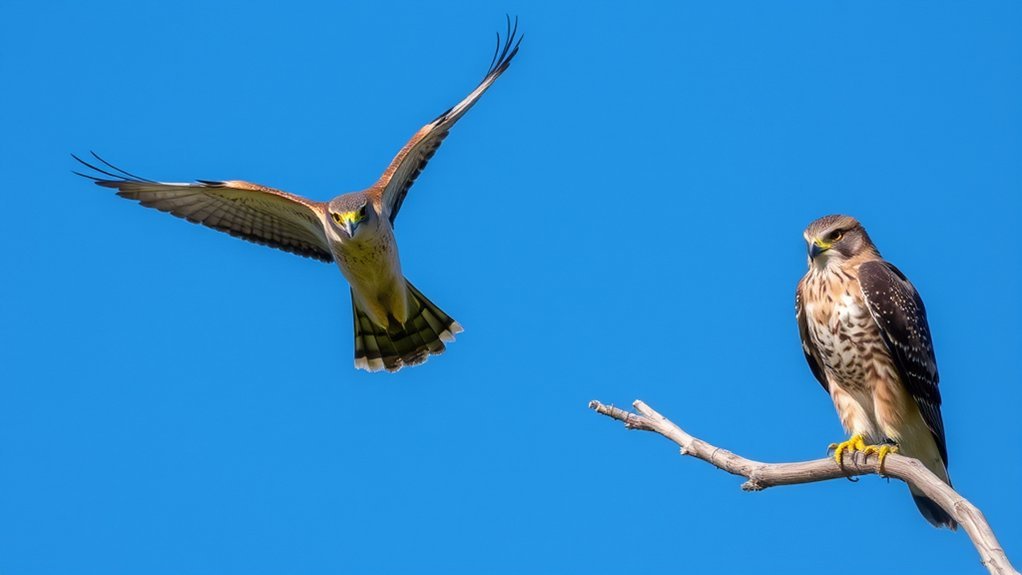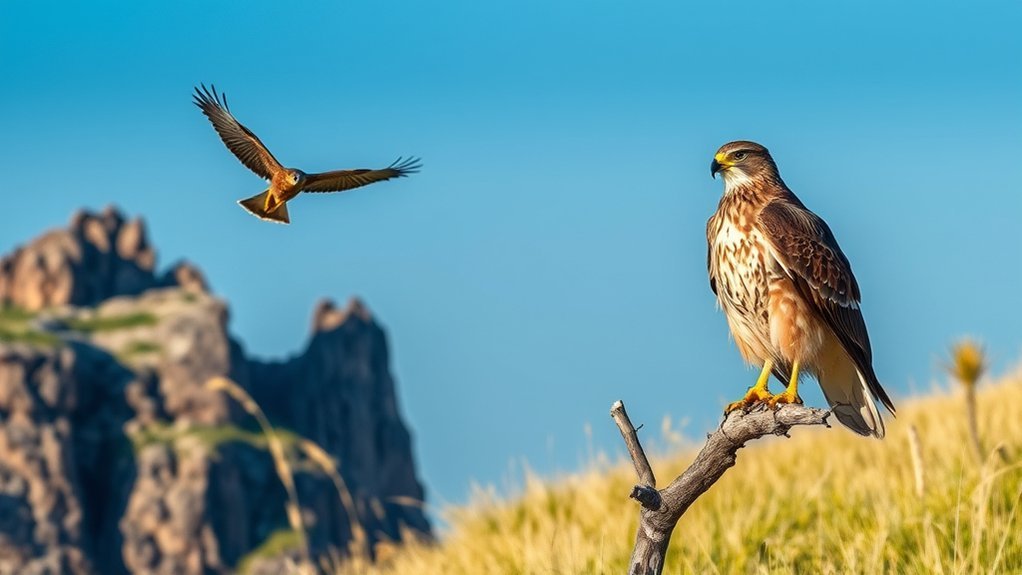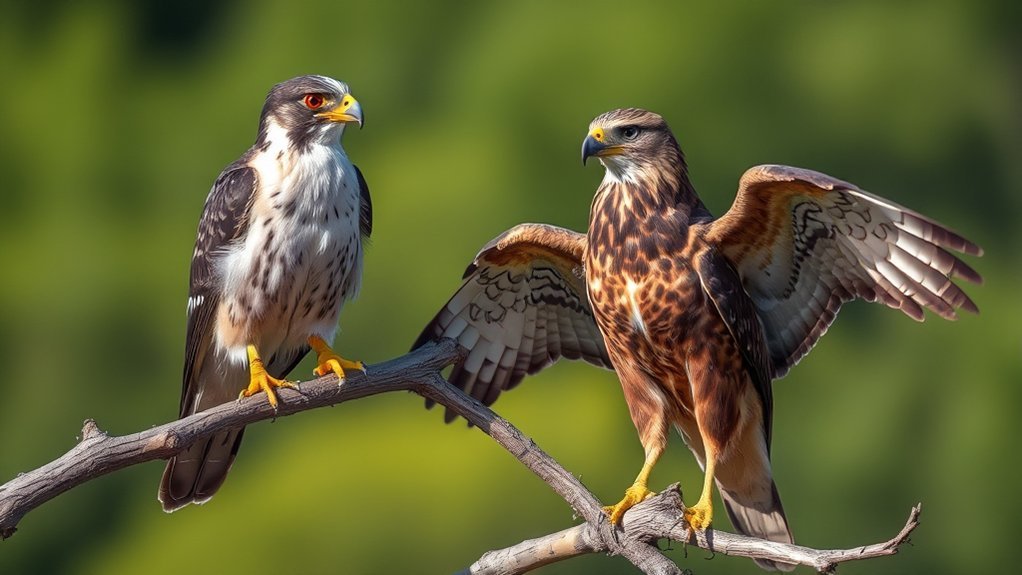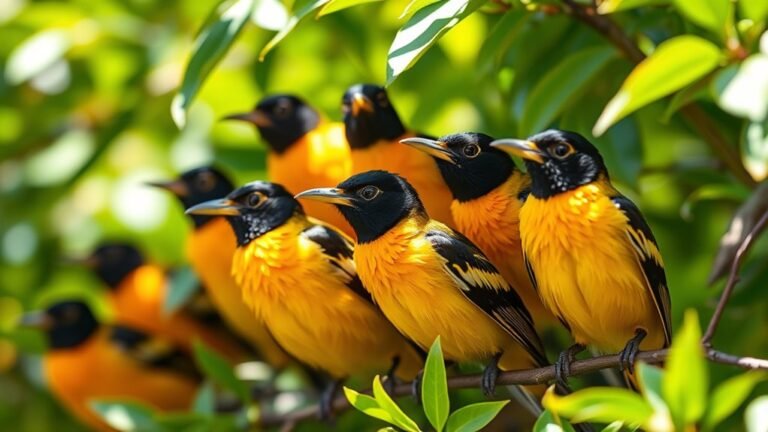Falcon Vs Hawk: Understanding the Differences
Falcons and hawks are both birds of prey, but they are different in many ways. Let's look at their bodies and how they hunt.
Falcons have sleek bodies and long, pointed wings. These features help them fly very fast and change direction quickly. They catch their food by diving at high speeds. Hawks, on the other hand, are chunkier and have broader wings. They prefer to sit and wait patiently for their meals. When they spot something, they swoop down to catch it.
These differences affect what they eat. Falcons often hunt smaller birds that can fly away quickly. Hawks might go after small mammals or reptiles, as they can be more patient hunters.
Understanding how falcons and hawks act and what they look like helps us see how they survive in their environments. Each bird has its own style, which makes them special!
A Quick Overview
Falcons and hawks are two types of birds of prey, and they have some important differences.
Falcons have long, pointy wings and sharp beaks. This helps them fly fast and catch their food quickly. They are very good at hunting.
Hawks have wider, rounded wings and curved beaks. They hunt differently. Hawks are patient and prefer to catch their food while it's on the ground.
Falcons like to live in open fields and cities. Hawks choose to nest in wooded areas and grassy places.
Falcons usually hunt alone. On the other hand, hawks often hunt in pairs or groups. They work together to catch their prey.
Both falcons and hawks are important for nature. They help keep balance in their ecosystems by controlling prey populations. Taking care of these birds is important for the health of our environment.
Physical Characteristics of Falcons and Hawks

When you look at falcons and hawks, you can spot some clear differences that make it easy to tell them apart.
Falcons have a sharp, hooked beak which is perfect for tearing into their food. Hawks, on the other hand, have a curved beak that helps them hold onto their prey tightly.
Now let's talk about their wings.
Falcons have long, pointy wings that help them fly fast and agile. This is great for hunting from the sky.
Hawks have wider, rounded wings that allow them to move easily and glide smoothly in different places.
Hunting Techniques and Strategies

Falcons and hawks are both skilled hunters, but they use different techniques to catch their food.
Falcons are fast flyers. They've sharp eyes that help them see their prey from high up in the sky. When they spot a small bird, they dive down quickly to catch it. This makes them really good at catching birds in mid-air.
Hawks, on the other hand, are more patient. They've strong wings and excellent eyesight, too. Instead of diving, they usually sit quietly on a tree branch or a pole. They wait for the right moment to zoom down and catch small animals or birds on the ground. They rely on being sneaky and quick.
Learning about how these birds hunt can help us appreciate the skills they have. Each bird has its way of finding food, making the world of birds interesting and full of surprises.
Habitat and Distribution

Habitat and distribution are important for falcons and hawks. Falcons can live in many places, like open fields and city areas. Hawks, on the other hand, like to stay in woods and grassy areas.
When you look at where they build their nests, you see why they live where they do. Falcons like to nest high on cliffs or tall buildings. This helps them hunt better. Hawks prefer to build their nests in trees for safety and to be close to their food.
Each type of bird has found a special place to live, which affects where you can find them. Learning about these differences can help you appreciate these amazing birds more.
You'll find more joy in watching them and learning about their habits.
Behavioral Traits and Social Structure
Falcons and hawks are both birds of prey, but they behave and live very differently. Falcons usually like to be alone or stay in small family groups. They rely on their quick speed to catch food.
Hawks, on the other hand, often hunt in pairs or small groups, showing more teamwork.
When it comes to nests, falcons build their homes in high places like cliffs or tree hollows to stay safe from others. Hawks prefer to make big nests in trees and often return to the same nest year after year.
These differences in how they act and live show how well each bird adapts to their surroundings. Understanding their behaviors helps us see their important roles in nature and how they connect with the environment around them.
Ecological Roles and Conservation Status
Falcons and hawks both play important roles in their ecosystems. Falcons are great at swooping down on smaller birds, while hawks often hunt mammals and reptiles. This competition between predators helps keep prey populations in check, which is good for biodiversity.
Both types of birds tell us a lot about the health of the environment. If their numbers start to drop, it could mean something is wrong in the ecosystem. That's why conservation efforts are crucial.
Things like habitat loss and pesticide use can harm their populations. By supporting these conservation efforts, we help falcons, hawks, and the overall health of their ecosystems.
Understanding their roles can connect us to their preservation, ensuring these amazing birds continue to thrive for future generations.
Frequently Asked Questions
How Can I Identify Falcons and Hawks in the Wild?
To spot falcons and hawks in the wild, you can follow some simple steps. First, use a field guide or birdwatching tips to help you.
Watch how they fly. Falcons usually fly fast and straight, while hawks may glide and soar. Pay attention to their beaks. Falcons have pointed, thin beaks, while hawks have stronger, wider beaks.
Look closely at their feathers too. Falcons often have sleek, colorful plumage. In contrast, hawks generally have brown or gray feathers with patterns.
Are There Any Notable Myths or Cultural References Involving These Birds?
Falcons and hawks carry important meanings in many cultures. Falcons are often seen as symbols of honor and bravery. People admire their strength and beauty. Hawks, on the other hand, are known for their sharp vision. They often represent wisdom and careful thinking.
In various myths, these birds are shown as powerful creatures. They can act as protectors, guiding humans on their journeys. Many stories use these birds to teach valuable lessons about freedom and insight. Overall, falcons and hawks have rich, meaningful roles in different cultures.
What's the Average Lifespan of Falcons and Hawks in the Wild?
Falcons and hawks live in the wild for about 3 to 20 years. Their lifespan can change based on their home and how much food is available. Good habitats and plenty of food can help them live longer, while tough conditions can make life shorter for these birds.
How Do Falcons and Hawks Communicate With Each Other?
Falcons and hawks talk to each other using sounds and body movements. They make different calls to show their territory, attract a mate, or warn others of danger. Their postures and actions help express if they are feeling strong or submissive. This way, they communicate and interact with each other easily.
What Are Common Misconceptions About Falcons and Hawks?
Falcons and hawks may look similar, but they are different birds with unique traits. Many people mix them up because of their sizes and how they hunt.
Falcons are built for speed. They often catch birds in the air. On the other hand, hawks prefer to hunt on the ground. They usually go after small mammals like mice and rabbits.
Understanding these differences helps us appreciate both birds. Next time you see a falcon or a hawk, you can recognize what makes each one special!

Luna is the passionate founder and author of Birds and You, a website dedicated to sharing her love for birds with fellow enthusiasts. Through her engaging articles and guides, she aims to educate and inspire others to explore the fascinating world of birds. When she’s not writing, you can find Luna observing birds in their natural habitats or sharing beautiful bird photography on Pinterest. Join her on this journey to celebrate and protect our feathered friends!







